Hegel was the philosopher of retrospection, for whom understanding only comes in retrospect. “The owl of Minerva spreads its wings only with the falling of the dusk.” Joshua Skenes, by recent media reports, was a sort of shooting star that lit up the American dining horizon but faded out prematurely in a by now faint trail of stardust. If it is indeed the truth that he has disappeared, at least temporarily, from the dining landscape, that may say more about the strictures of a dining scene that moves on prematurely itself, in its perpetual search for the “new.” 3 out of 4 of the Gastromondiale editors (who were able to dine at Saison before he left the stoves to Gras) were dazzled by perhaps the only American chef to show how ingredients could be enhanced by paying a parental care to them. No American chef had ever exhibited the sort of maniacal care to their temporality, patient to their developing maturity as an elementary school teacher might wait for an unruly one to shed its acerbic edge.
Brandon GRANIER, Besim HATINOGLU
The Skenes era at Saison was the greatest period, not only in Californian cuisine, but in American. Skenes was an original, not because he did not borrow (he did profusely), but because his sensibility and capacity to adapt the ideas that preceded him, soared beyond those from whom he learned. As with any figure who shrugged off the politically correct imperatives of a mediocre American dining scene, he attracted his detractors. Greatness seeks resistance and produces resentment, inevitably.
We at Gastromondiale celebrate Joshua Skenes, the chef who made us rediscover the possibility in a turnip, a beet, a pumpkin. Who made us enjoy cuisine, uniquely American in its diversity, unlike we had until then and have since. We hereby present the second of Vedat Milor’s two reviews of Skenes-era Saison. Click here for the first part of his review. Cheers.
Joshua Skenes is one of the few chefs, not only in the States, but anywhere, who has a personal style and who can put together a multi-course menu degustation which proceeds logically and titillates both the brain and the palate. Following my previous evaluation of this restaurant, we have had two more meals there, in June and in October, and thought that the restaurant deserves an even higher score. Both meals were consistent, but I should say that we have a slight preference for what we had in June (18.5/20), in comparison with October (17.5/20). The ranking above is an average in ranking.
In June we took our own wine and in October we opted for the pairing. We also found the food-alcoholic beverage pairing (we had two sakes and a beer) to be successful, save for a minor hitch (see the pumpkin dish below). Another positive is that the service flows flawlessly and with grace under the direction of Patrick Ellis.
Overall there are only two high end dining spots in the States, Manresa of David Kinch and Saison, which may be called destination spots, and both chefs draw inspiration from Japan and rely on local products. For some reason I can only think of these two restaurants as representatives of the best of California.
Joshua Skenes’s cooking is very focused, looks minimalist, but actually is quite complex in conception. He makes excellent use of charcoal and wood smoke, often uses dairy products to add dimensions and richness to his dishes, and he is able to concentrate flavors without chemicals-molecular techniques.
The only lament I have is that as the dessert chef, Shawn Gawle, has moved to another restaurant, there are no more Parker House rolls and canelés with coffee. (I miss the soufflé less). Parker House rolls were the most decadent, unhealthy, white puffy bread one can ever experience in modern times. When savoring them after an incredibly sophisticated and slim course, say the “seaweeds,” I always felt like I was transported away from a slender beautiful lady’s arms to the lap of a big bosomed, big bottomed, and big hearted Fellini-esque whore, and then back again to modern norms. I loved this indulgent sinful voyage during the meal, but it is no longer possible!
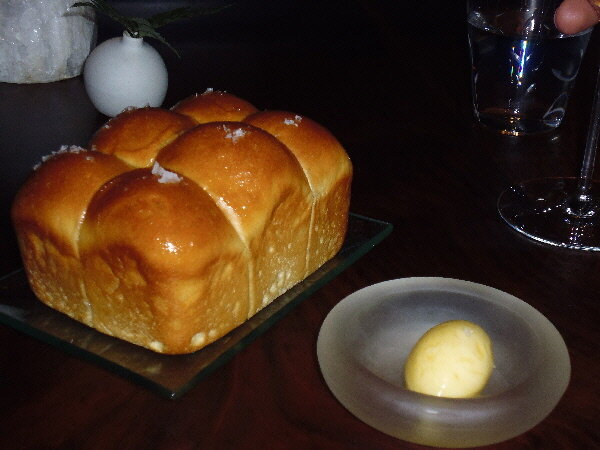
I would love to highlight a few favorites from the last two meals.
1. Tomato in a few forms, citrus marigold (October)
The theme, all tomato, in season and in different textures (jellied, dried in the wood burning oven, etc.) is déjà vu, but this is one of the most appetizing examples, focused and devoid of unnecessary elements, and a perfect beginning to a 12 course meal. Bravo to the sommelier who paired it with a 2013 Meyer-Näkel Spätburgunder Rosé, Ahr, Germany. Just like the dish the wine was clean and focused with bracing acidity.
2. White sturgeon caviar, sturgeon belly cured and smoked on kelp, gelée of the grilled bones (June)
Skenes certainly did more work with caviar last June, and this concoction was outstanding. He chose to pair the caviar with potato in October. This is a classic, but not as memorable as the previous one. But who can resist fresh, briny, popping in the mouth sturgeon eggs (a combination of Israeli and Californian caviar), especially when one is gulping down two great bubblies with it: Krug (more elegant and complex) and a rare A. Margaine Blanc de Blancs, Special Club bottling from Montagny, the village of Villers-Marmery (quite vinous due to three years sur lie, big and incisive and nutty-buttery notes overall and a long finish).
3. Abalone over the embers, sauce of the livers and capers (both in June and October)
This is one of the best abalone preparations, on par with anything in Japan. Like Chez Michel, one of my favorite bistros in Paris, Skenes uses the liver and uplifts it with vinegar and capers. The abalone absorbs the aroma of embers. The 2012 Didier Dagueneau, Blanc Fume de Pouilly, steely and wiry, is as of a good match as any other wine I can think of (a young Silex or Pur Sang would be too overpowering and closed at this stage).
4. Sea urchin toast (both in June and September)
This is a decadent dish. The grilled toast (from Tartine bread) is yeasty, and it is dipped in soy, raw milk, and brown butter. The sea urchin is very fresh, soft and oh so sweet and velvety. I can’t disagree with the beverage choice: good sake. It was Kanbara Junmai Ginjo, “Bride of the Fox,” from Niigate, Japan. It is neutral and accentuates the sea essence flavor of the Santa Barbara sea urchin, without interfering with it. In June he added some river algae to the dish. Although both are excellent, we prefer the October version without it as one should want to savor the uni. 20/20
5. Seaweeds in seaweed vinegar and herbs (October)
This is a crisp, lively, aromatic, beautiful to look at, whets the appetite, and complex salad. This follows the rich, creamy, oomph-like sea urchin. It reignites and prepares the palate for the black cod that follows.
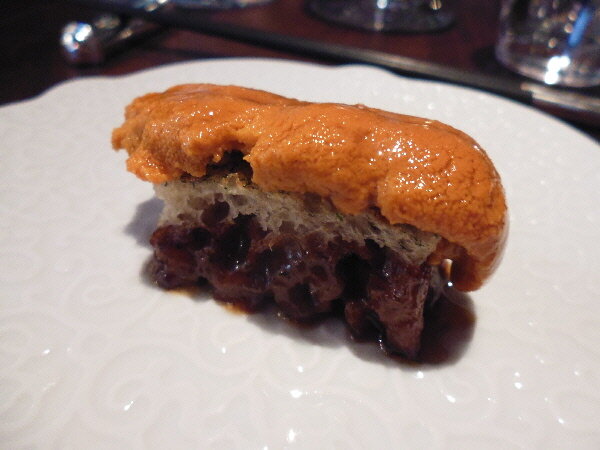
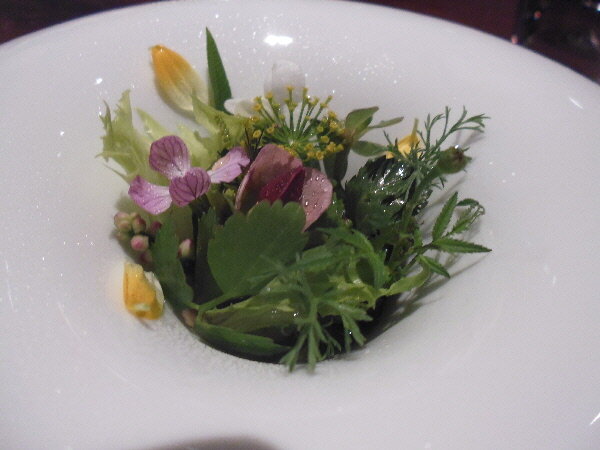
6. Naple long pumpkin, hung over the fire for three days (October)
It was first dehydrated and then slowly grilled. Not sweet at all, this pumpkin reminded me of a kind we find in Konya, Turkey. It was grown in Saison’s farm in Lagunitas. The wine match here was not perfect. They re-filled our glasses with 2012 Schloss Gobelsburg Riesling “Reserve,” “Gaisberg,” Kamptal, Austria. This is an excellent Kamptal, with good grip, minerality, and a minty-herbal nose which went perfectly with the preceding course: “ratatouille.” The printed menu says that the wine is a 2012 Mosel Spätlese from Ziliken, which I believe would have been a better match given the higher residual sugar and silky texture (just like the pumpkin’s texture).
7. Sea cucumber – espardeñas (June)
They are grilled on the fire and a chicheron was made from the skin.
They are as good as the espardeñas at Hispania in Arenys de Mar, Spain, but with the extra crunchy element, the chicharrón. This dish is 20/20. It paired well with the wine I brought, 2002 Coche-Dury Corton-Charlemagne, which was drinking beautifully. But it paired even better with what the sommelier had kindly poured for us: 2011 Sartarelli Verdicchio, “Tralivio” (a full bodied wine with bitter almonds, tangerine, and honey notes).
8. Foie gras, peaches, and maple from the fire (June)
I only recall early Aduriz’s (Mugaritz) take on foie gras for such an interesting texture, i.e. not too fat but with a rich and concentrated flavor. Instead of peaches, plums figured in the dish to cut the richness, and the peach turned out to be the peach wine used in deglazing. I cross my fingers hoping that Skenes will do this dish again. With this and also the wood pigeon dish (below), he also proves that he is a good saucier.
9. Eight Years Old Beef Bone Marrow (June)
This is a wow dish, with thinly sliced wild ceps on top of the aged beef tartare and carpaccio and grilled bone marrow. The quality was outstanding, and this sequence was perfect (this dish followed brassicas, which is a classic here, but somehow not as impressive as an earlier version).
10. Wood pigeon with sanshō pepper leaves with a bouillon of pigeon bones and pickles (June)
This was probably the most impressive meat dish I have eaten for some time in the States. It must have been a lot of work, but the work paid off. See the beautiful design with fresh squash blossoms, burdock, and rhubarb. The broth was very clear, the morel mushrooms from Modesto were quite good, and the aging of the pigeon (faisandage) was optimum. It was minerally, but not dry. One really needs a complex Grand Cru Bourgogne with this, rather than a good Californian wine, like Rajat’s nice Santa Barbara Pinot or a very pure and delicious 2006 B. Kosuge Pinot Noir “Hirsch Vyd”, Sonoma Coast.
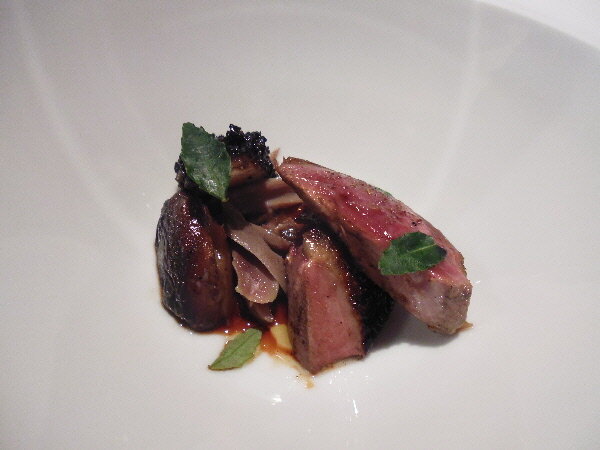
11. Krug Sorbet, followed by wild berries, French marigold, and milk ice cream (October)
This is a wild strawberry panna cotta flavored with marigold flowers and raw milk ice cream. I am always appreciative of the Krug sorbet as a pre-dessert, but preferred the panna cotta to the (very good) souffles of the past. This is a light, aromatic and perfect ending to a great meal.
This review was originally published on November 2, 2014.
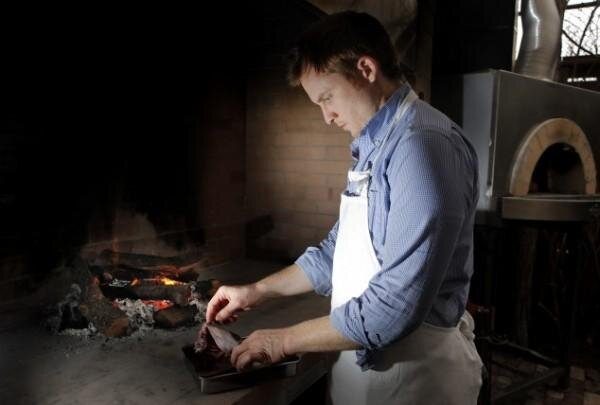


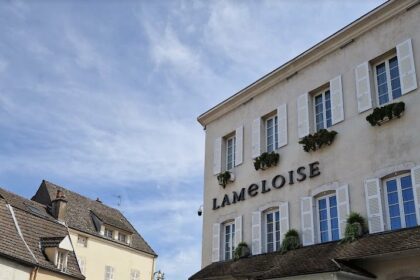
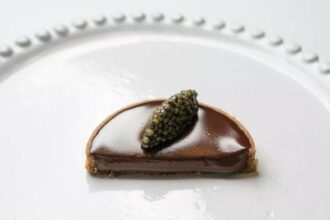
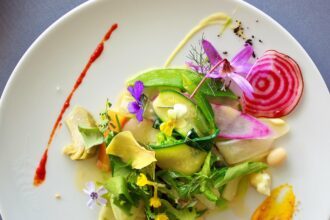
I am not going to comment on the article itself as I’m yet to read it but wanted to point out that, maybe adding a link to the relevant articles would be helpful.
I am aware that if you navigate through the previous menu it is extremely easy to find but I guess it might be an option for you to consider. For the extremely lazy: https://www.gastromondiale.com/food1/2019/11/15/joshua-skeness-saison-part-i
Additional Note: When I search for "Joshua"/"Skenes"/"Skenes’s" your search(the search widget on the top right) does not provide a result.
I think there might be a bug with how the pages are indexed.
Skenes at Saison was indeed a special time. I was lucky enough to have several meals there during that time, and reading these reviews makes me miss the place. I missed the Gras era in its entirety, though that had more to do with not being in SF during his tenure.